Part 1 of Chapter 3 of Runaway Eating: what causes Runaway Eating, and who’s at risk?
Earlier on, we talked about stress and how we women can easily turn turn to food for comfort as a result. Why do only some actually become runaway eaters?
 There are some risk factors that are especially responsible. These are as wide-ranging as the media’s emphasis on thinness as beauty, or as personal as family history, or depression. The driving forces do remain the same. While having risk factors don’t ensure that you will get the condition, it does set the stage, so to speak. It might not actually start a fire, but the tinder is built up.
There are some risk factors that are especially responsible. These are as wide-ranging as the media’s emphasis on thinness as beauty, or as personal as family history, or depression. The driving forces do remain the same. While having risk factors don’t ensure that you will get the condition, it does set the stage, so to speak. It might not actually start a fire, but the tinder is built up.
First, we’ll look at the beauty factor. For years and years, women has been valued for her beauty. From Helen of Troy to Paris Hilton, those with beauty seem to have everything. They have wealth, love, adulation, jobs, and career advancement. Many of us spend lots of time and money on cosmetics, manicures, and pedicures. We flip through catalogues and women’s magazines looking for the latest styles.
The sad part is that to society, beauty equals thin/skinny/slim/slender. Most people cannot achieve the desired weight. They were not made for it. How can a big-boned woman like Oprah ever become a waif like Nicole Richie? It brings a terrible price, this pursuit.
The writers have compiled a short timeline for this.

Camille Clifford: the ideal Gibson Girl
The early 1900s. Thin becomes in. This is perhaps when it all started. Before this time, plump, full curves were the ideal. They indicated that the well-endowed woman was well-fed and didn’t have to work.
The early 20th century ended this trend of round people. Slim, trim, and slender was desired, perhaps to differentiate from the stocky immigrants that were pouring into the States. It was a symbol of good breeding and discipline. Heaviness, the women thought, meant laziness, greediness, and lack of self-control.
Charles Dana Gibson revolutionized our perceptions with the Gibson Girl. This woman appeared tall, very slim, fit, and athletic with a small waist. Her face was gorgeous. Naturally no one looked like this, or very few people. After all, she was merely a figment of the artist’s imagination, based on what he felt the ideal woman should look like. However, women felt bad about themselves or not achieving this goal.
Just then, a physical fitness craze hit the country. Clothes started to reveal more, making women feel self-conscious about their appearance.

The flapper.
1920s: This was the age of the flappers. These girls wanted to be free to dance, play sports, and lead more active lives than their mothers and grandmothers. No more corsets, sleeves, or skirts. Well, not really. But whatever was there barely scraped the top of their calves. Women’s anxieties skyrocketed, especially since the perfect flapper’s body was small, slim, and flat chested. Fad diets were in. Self-induced vomiting was in. Laxative abuse was in.
Advertisers took the chance to take advantage of women’s insecurities about themselves to talk about weight-loss equipment, fad diets, and much much more. The message here was: “Slim down and you’ll be beautiful and happy.”
1940s to 1970s. Thin becomes a fashion statement. We know from other reading that designers prefer skinny models. Why? Because skinny works like a hanger. Clothes hang on the lady with fewer wrinkles, while people with a little shape have more wrinkles because of their curves.

Twiggy
Along the way, the hanger lady became an object of beauty. But no one looked like a hanger. Big problem. Instead of seeing that this ideal was not only unattainable but also quite ridiculous, women conformed it. They lusted after it, starved to fit into it. The result was despair.
Twiggy, a 95 lb, 5 feet 6 teen model, exploded onto the fashion scene during the late 1960s. Her sticklike figure made everyone feel heavy, even slim women. Fashions left little to the imagination. People believed, “You can never be too thin or too rich.” Eating disorders, as a result, suddenly abounded.

Fonda
1980s. A fitness craze hit the nation. Jane Fonda turned out her famous exercise videos, urging women to “feel the burn.” The thin woman was apparently not only supposed to be hanger girl, but also have well-defined muscles, flat stomach, and a small, tight butt. Jane Fonda had all these things. Only later did people find out that she was bulimic. However, this look was impossible for most women. Those that succeeded did so only by spending hours at the gym, or starving, or purging.
1990s. Welcome to the era of the middle-aged woman who never gets old. Think about the 40-50 year olds (like Goldie Hawn or Demi Moore) who look like 20 year olds. These woman have an unusual combination of genes, along with personal trainers and plastic surgery. They have set a higher standard: looking your age is bad. You should be doing all you can to look young.

Demi Moore
I can’t deny that. It seems that every single magazine I open is filled with spreads and spreads of anti-aging commercials. It’s not just the commercials, either. Most women’s magazines include a beauty section which will inevitably include some creams and serums which will make you look younger. The product testing department also has a few products. Why? Because right now there’s a demand for such products. We want to look young. We want to look young now. We also want to continue to look young at age 50-60, just like Demi Moore. I don’t think Moore or Hawn are responsible for the problem, but the fact that the media commends them and emphasizes the fact that they still look young even at such an age makes most women feel inadequate for not being like that.

Goldie Hawn

 Part 1 of chapter 1 of Runaway Eating: Not for Teenagers Only
Part 1 of chapter 1 of Runaway Eating: Not for Teenagers Only The book Runaway Eating by Cynthia M. Bulik, Ph.D., and Nadine Taylor, M.S., R. D. takes a good look at this trend. They also include an 8 point plan to help conquer this kind of thinking. (I will not go through the 8 point plan because there’s a lot of books to read.) This book, is, however, designed to help the reader make informed decisions about health, and is not a medical manual by any means. And if you are suffering from an eating disorder, it’s best to seek a doctors help rather than to turn to a book alone.
The book Runaway Eating by Cynthia M. Bulik, Ph.D., and Nadine Taylor, M.S., R. D. takes a good look at this trend. They also include an 8 point plan to help conquer this kind of thinking. (I will not go through the 8 point plan because there’s a lot of books to read.) This book, is, however, designed to help the reader make informed decisions about health, and is not a medical manual by any means. And if you are suffering from an eating disorder, it’s best to seek a doctors help rather than to turn to a book alone. Runaway eating runs rampant through society. However, using food as a solution for your problems is no solution at all, as women find out.
Runaway eating runs rampant through society. However, using food as a solution for your problems is no solution at all, as women find out.
 We like to look at pretty faces. Friends are chosen based simply on whether a potential friend is attractive or not. We want to do business with pretty faces. And we want to marry an attractive person. Gordon L. Patzer pointed this out in his book Looks, and all this stuff is supported by research, sad to say. Teachers like pretty students because they feel that the more attractive students show the most potential. Pretty babies get more love and attention first from nurses at the hospital at birth, and then at home with their mothers. Pretty people seem to have an easier time in life. Employees hire pretty people to make their firms successful. Freelancer Jenna Glatzer writes in her book
We like to look at pretty faces. Friends are chosen based simply on whether a potential friend is attractive or not. We want to do business with pretty faces. And we want to marry an attractive person. Gordon L. Patzer pointed this out in his book Looks, and all this stuff is supported by research, sad to say. Teachers like pretty students because they feel that the more attractive students show the most potential. Pretty babies get more love and attention first from nurses at the hospital at birth, and then at home with their mothers. Pretty people seem to have an easier time in life. Employees hire pretty people to make their firms successful. Freelancer Jenna Glatzer writes in her book 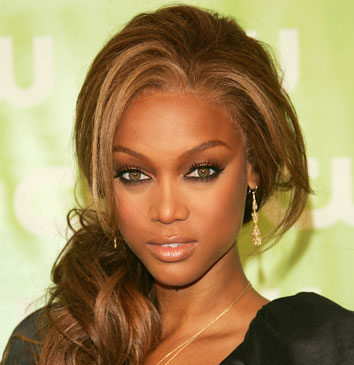
 Moving along…
Moving along…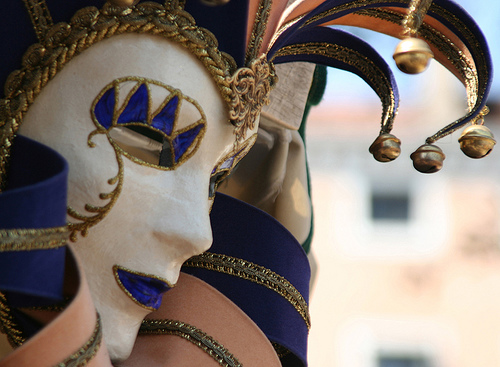 Martin goes on to say that a “starving daughter” is at the center of every “perfect girl.” The face we show to the world is an outward mask that says to our friends that everything is going well. Inside, we’re starving for a lot of things. We’re empty and in need, and they don’t know.
Martin goes on to say that a “starving daughter” is at the center of every “perfect girl.” The face we show to the world is an outward mask that says to our friends that everything is going well. Inside, we’re starving for a lot of things. We’re empty and in need, and they don’t know.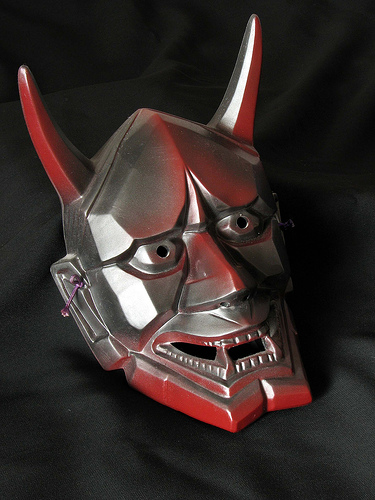 And our bodies take the ensuing abuse.
And our bodies take the ensuing abuse. Some doctors encourage the attitude. They’re so tired of the obesity epidemic that they’d do anything to get their patients from that extreme. They forget that there is another extreme at the other end. These doctors want rigorous exercise with restraint in diet, no matter who the patient is. Martin interviewed a girl with an eating disorder. This girl saw a doctor in college. She hoped that he’d notice her weight going down and maybe help her. However, he told her to “keep up the good work!”
Some doctors encourage the attitude. They’re so tired of the obesity epidemic that they’d do anything to get their patients from that extreme. They forget that there is another extreme at the other end. These doctors want rigorous exercise with restraint in diet, no matter who the patient is. Martin interviewed a girl with an eating disorder. This girl saw a doctor in college. She hoped that he’d notice her weight going down and maybe help her. However, he told her to “keep up the good work!” Also, I’m not feminist. That’s another thing.
Also, I’m not feminist. That’s another thing.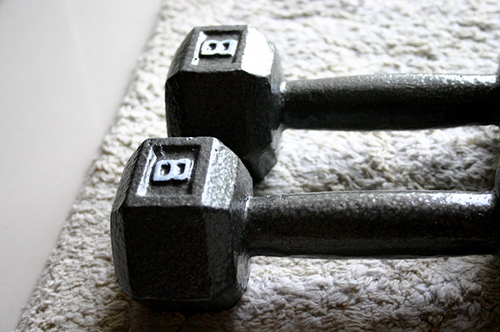 I, too, know people with really screwed up ideas about health and fitness. There are the girls who believe that any food is bad and that they have to exercise to get the Tic Tac or chip out of their system. There are my friends who daily post stats on how much they eat per day. Their limit is 210 calories. Not per snack. Not per meal. For the whole freaking day, they restrict themselves to 210 calories. What goes in those 210 calories? An apple. A 60-calorie lollipop. That’s it. It’s not about eating healthy, it’s about eating less. Then there’s the miserable girl who eats food – lots – when she’s depressed, and then purges it later.
I, too, know people with really screwed up ideas about health and fitness. There are the girls who believe that any food is bad and that they have to exercise to get the Tic Tac or chip out of their system. There are my friends who daily post stats on how much they eat per day. Their limit is 210 calories. Not per snack. Not per meal. For the whole freaking day, they restrict themselves to 210 calories. What goes in those 210 calories? An apple. A 60-calorie lollipop. That’s it. It’s not about eating healthy, it’s about eating less. Then there’s the miserable girl who eats food – lots – when she’s depressed, and then purges it later. In fact, I recently talked to one who was stressed out about her homework. She’s 12. She said she was eating like a pig and was fat. I told her she wasn’t fat. “Ask your big sister,” I said.
In fact, I recently talked to one who was stressed out about her homework. She’s 12. She said she was eating like a pig and was fat. I told her she wasn’t fat. “Ask your big sister,” I said.





 I thought Max Factor was the name of a mascara.
I thought Max Factor was the name of a mascara. L’Oreal is now the world’s largest cosmetic merchant. They reported their annual sales in 2006 to be 15.8 billion.
L’Oreal is now the world’s largest cosmetic merchant. They reported their annual sales in 2006 to be 15.8 billion. Others use pseudoscience. Shiseido had their Body Creator sin gel, which claimed that its ingredients could melt away over 2 inches of body fat in a month without the need of diet or exercise. Sounds familiar? It’s not that much different from Nivea’s My Silhouette cream that basically claims that their white tea melts fat cells until they don’t grow back. No need to exercise, either.
Others use pseudoscience. Shiseido had their Body Creator sin gel, which claimed that its ingredients could melt away over 2 inches of body fat in a month without the need of diet or exercise. Sounds familiar? It’s not that much different from Nivea’s My Silhouette cream that basically claims that their white tea melts fat cells until they don’t grow back. No need to exercise, either. Dr. Patzer states,
Dr. Patzer states,
 We may say that this is just the way it is. But anthropologists studied a tribe in Africa. They wanted to see whether the physical appeal stereotypes of that tribe had been influenced by the media. They found that, opposite of our like of hunky men, girls liked slender men. Another researcher showed Men’s Health to the tribe members, with some spreads of male body builders. One old guy looked at the bulging pectorals of a male body builder. “Was it a man, or a very, very strong woman?”
We may say that this is just the way it is. But anthropologists studied a tribe in Africa. They wanted to see whether the physical appeal stereotypes of that tribe had been influenced by the media. They found that, opposite of our like of hunky men, girls liked slender men. Another researcher showed Men’s Health to the tribe members, with some spreads of male body builders. One old guy looked at the bulging pectorals of a male body builder. “Was it a man, or a very, very strong woman?”
 That’s not all. Between 1997-2004, at least 36 individuals died in Florida as a result of complications from cosmetic surgery.
That’s not all. Between 1997-2004, at least 36 individuals died in Florida as a result of complications from cosmetic surgery.




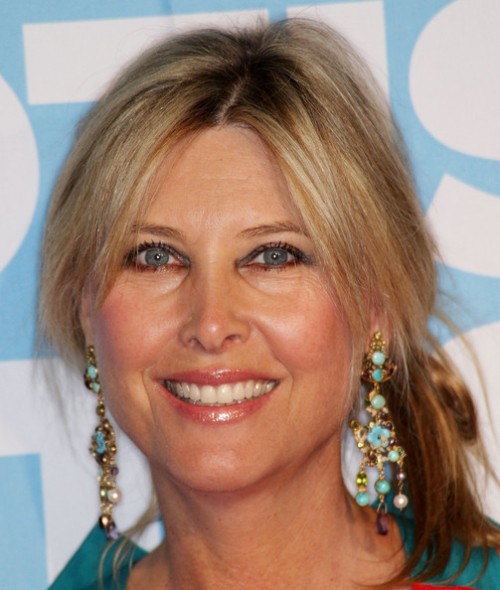


 Have you ever seen the billboards by the side of the road glorifying a sculpted male body? Or the covers of Men’s Health magazine… or the washboard abs perfume by Abercrombie and Fitch… or the steroid pumping body builders…
Have you ever seen the billboards by the side of the road glorifying a sculpted male body? Or the covers of Men’s Health magazine… or the washboard abs perfume by Abercrombie and Fitch… or the steroid pumping body builders…
 What about the billboards? This Abercrombie and Fitch billboard is an excellent example of what you might find.
What about the billboards? This Abercrombie and Fitch billboard is an excellent example of what you might find.
 Along with these findings, Pope and his researchers interviewed men suffering from what they call “muscle dysmorphia,” which is sort of like “reverse anorexia.” While an anorexic girl looks at herself in the mirror and sees fat even though she is shrinking, a male with this disorder looks at himself and says, “Not buff enough,” even though he may have muscles where no man should have muscles. A fellow whom they called “Kevin” believed his own arms were sticks even though his body bulged with muscles in strange places. He became a near recluse because of this disorder.
Along with these findings, Pope and his researchers interviewed men suffering from what they call “muscle dysmorphia,” which is sort of like “reverse anorexia.” While an anorexic girl looks at herself in the mirror and sees fat even though she is shrinking, a male with this disorder looks at himself and says, “Not buff enough,” even though he may have muscles where no man should have muscles. A fellow whom they called “Kevin” believed his own arms were sticks even though his body bulged with muscles in strange places. He became a near recluse because of this disorder. Barbara L. Frederickson of the University of Michigan did two experiments to document the psychological costs of raising girls in a culture lik eours.
Barbara L. Frederickson of the University of Michigan did two experiments to document the psychological costs of raising girls in a culture lik eours. According to this researcher and social psychologist Tomi-Ann Roberts, the tendency to value physical appeal and sex appeal as body identity rather than their health, strength, energy, etc leads to more than an eating disorder or diminished mental performance. It could be linked to high prevalence of depression and sexual dysfunction among American women.
According to this researcher and social psychologist Tomi-Ann Roberts, the tendency to value physical appeal and sex appeal as body identity rather than their health, strength, energy, etc leads to more than an eating disorder or diminished mental performance. It could be linked to high prevalence of depression and sexual dysfunction among American women.
Media Sightings: Fake Boobs
I was browsing Glamour‘s twitter feed when I saw this blog post on their website.
Apparently, the blogger recently got an email from a Long Island cosmetic surgeon, who told them that breast implants, and get this, are the most popular high school graduation gift for girls today.
Surprising? Or not surprising?
Apparently, these young women don’t want a new car. They don’t want to have a trip to Europe. They want bigger boobs. So their parents give it to them. As a graduation present.
What happened to the days when parents would give their daughters things like new cars, jewelry, or trips to Europe? I know my parents would have given me stuffed animals if I cared about stuffed animals. Instead they’re giving me driving lessons, which I’m pretty thankful for.
But why give their daughters bigger boobs? Is it because plastic surgery is the in thing right now among both young and old?
The cosmetic surgeon wrote in his press release that right now the big thing is breast augmentations. He writes,
More importantly, did they feel that giving their daughters bigger boobs would boost their girls’ self-esteem?
You know how I feel about this. I think it’s rather sick. It also reflects the modern viewpoint of today, that getting a breast surgery is something that is both common, normal, and even GOOD.
Many of the comments agreed with me. One woman said, “I think that’s awful. It shows that the parents and the girl care more about the way she looks and less about her academic future. Give her money for college . . . unless she’s a stripper, big boobs will not secure her a career!”
One woman said that the girls aren’t done developing, so this is a bad idea. I agree with her, seeing that teenagers still have a ways to grow.
Another woman echoed this thought, saying that she was really self-conscious of her breasts during high school. However, she graduated high school with A cups, became a B in college, and became a C in graduate school! She said that getting implants would have been disastrous on her still growing body.
Another commenter stated that she felt that getting this as a “gift” was rather irresponsible unless it was an extreme need.
However, this comment did give me pause:
Hm.
Are we in a state when we feel that getting bigger boobs or improving on some body part will give us a boost in self-esteem? If you’re really ashamed about everything, getting bigger boobs aren’t going to fix anything. You have to fix the underlying problem before you go ahead and get something else “fixed.” It’s rather permanent, and you have to pay for upkeep for the boobs every 10 years. If you don’t fix the self-esteem issues, you’ll just end up paying for a lot of unnecessary surgeries.
The fact that this young woman says that she’s ashamed of “EVERYTHING” makes me rather disturbed. And the fact that she believes that fixing her boobs would fix her problems… and that she has many things that she hates about herself.
I hope she’ll be ok in life. I hope…
The comments are still pouring in. “The parents must not have much faith in their child’s appearance or personality, if they feel this desire should become a necessity.”
In the end, it’s up to you, as parents or as girls graduating soon. Whether you get big boobs or not, I wish you luck. However, a lot of the comments I’m seeing still shows that the readers of Glamour at least have good sense and know what’s important and what’s not.
Leave a comment
Posted in Media Sightings
Tagged abuse, anxiety, career, comment, esteem, fake, important, media, self, sick, sightings, teens, trends, used, work